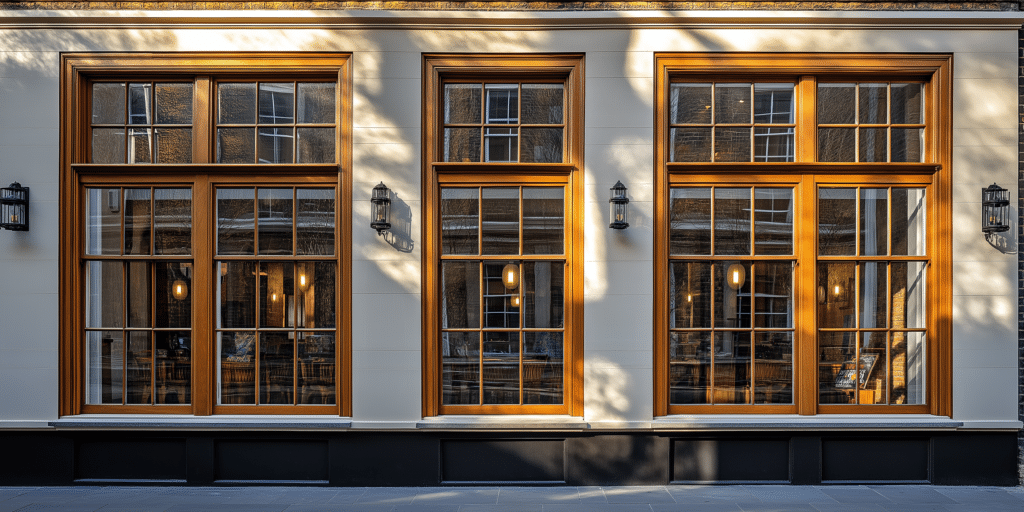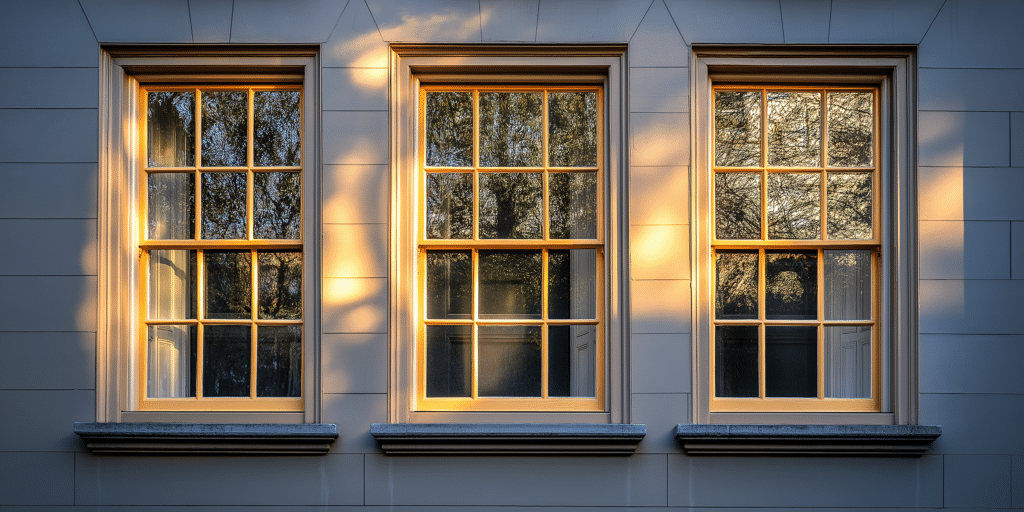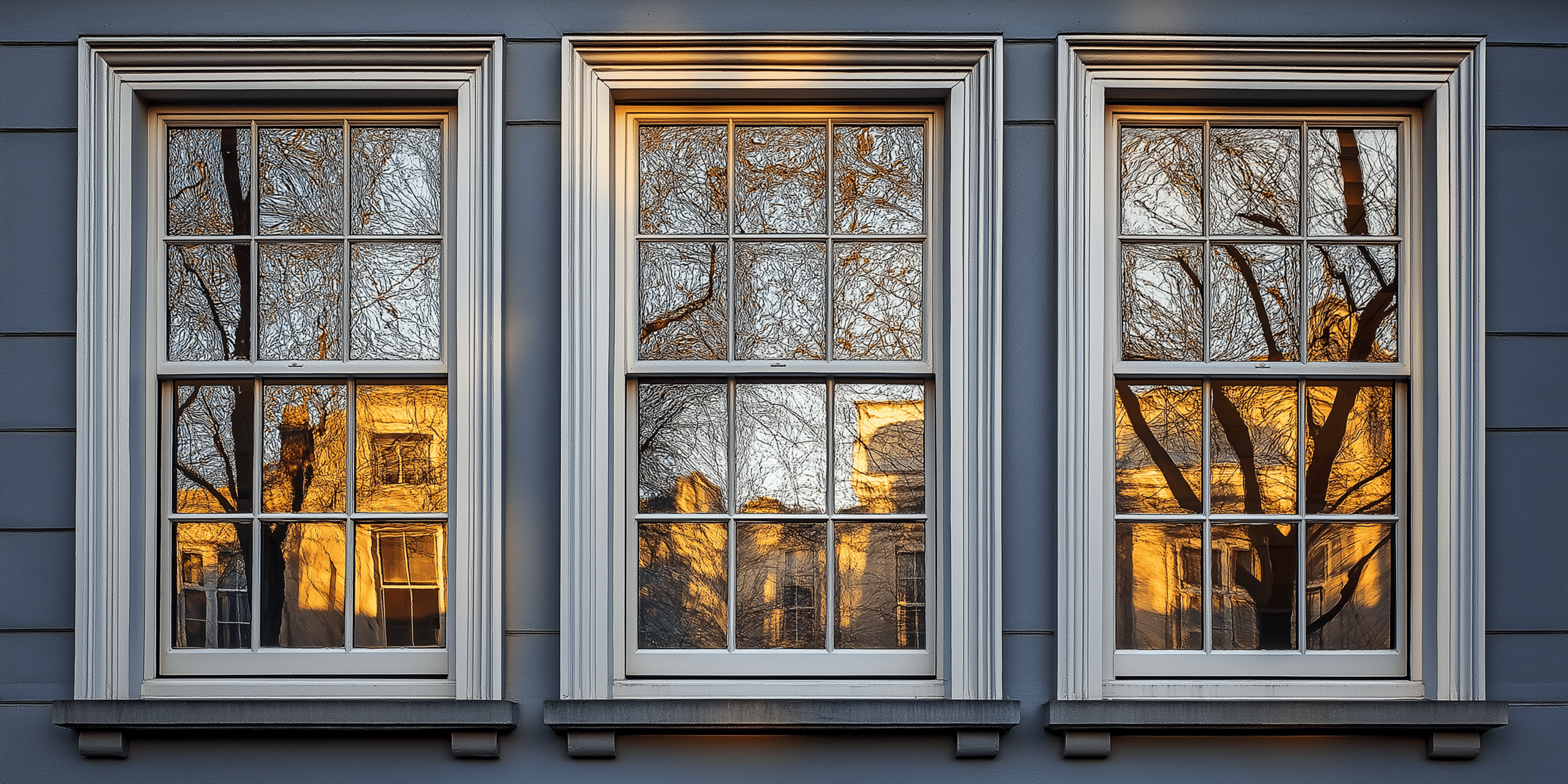Introduction to Sash Windows Glass Panes

Sash windows are a quintessential feature in British architecture, renowned for their elegance and functionality. When considering sash window installations or restorations, the selection of glass panes becomes a crucial aspect. But why is the type of glass used in sash windows so important? Simply put, the right choice of glass not only enhances your home’s energy efficiency but also contributes significantly to its aesthetic appeal, noise insulation, and security.
The choice of glass is key, from single glazing, which is often seen in period properties, to double and triple glazing designed for optimal thermal insulation.
Types of Glass Used in Sash Windows
The standard choices include single glazing, double glazing, and triple glazing. While single glazing remains traditional, it lacks the insulation benefits of its counterparts. Double-glazed sash windows consist of two panes with a gap filled with argon gas for superior insulation. As the name suggests, triple glazing adds a third pane, further enhancing energy efficiency and noise reduction. Double glazing usually provides an optimal balance between cost and performance, making it the most popular choice.
Laminated glass is formed by bonding two panes together with a plastic interlayer, making it ideal for security as it holds together when shattered. In contrast, tempered glass is designed to break into small, blunt pieces, reducing injury risk, and is a popular option in high-traffic areas.
Low-Emissivity glass (Low-E glass) has a microscopically thin, transparent coating that reflects heat while letting light pass through. This helps retain heat during winter while keeping interiors cooler in the summer, making it a prime choice for energy-conscious homeowners.
Energy Efficiency of Glass Panes in Sash Windows
One of the most frequently asked questions is, how does the choice of glass pane affect the energy efficiency of sash windows? It all boils down to the U-value, which measures the rate of heat transfer. The lower the U-value, the better the window’s insulation. Double-glazed sash windows typically offer U-values around 1.1 to 1.6 W/m²K, compared to single-glazed windows, which have much higher U-values, around 5.0 to 6.0 W/m²K, making them significantly less energy-efficient.
The space between panes in double or triple glazing is often filled with inert gases like argon or krypton, which are denser than air, reducing heat transfer. For instance, argon-filled glazing can lower U-values by an additional 0.1 W/m²K, further improving insulation and reducing energy bills. In colder climates, these gases play a vital role in retaining heat, making your home warmer and reducing reliance on heating systems.
A thermal break is a non-conductive material that separates the inner and outer parts of the window frame, preventing heat loss through the frame. When combined with double glazing, thermal breaks help to create a more energy-efficient window, reducing heat transfer by up to 60% compared to traditional frames without breaks.
Acoustic Insulation and Soundproofing Capabilities

Living in a bustling urban environment? Then you’re likely concerned about noise reduction. Acoustic glass is designed with layers of laminated glass that contain a special acoustic interlayer to dampen sound vibrations. If you’re asking what’s the difference between standard and acoustic glass in sash windows, the key lies in their soundproofing properties. Standard double glazing can reduce noise levels by up to 30 decibels (dB), while acoustic glazing can cut noise by 40-50 dB, making a huge difference for properties in high-noise areas like city centres or near transport hubs.
The thicker glass panes combined with wider gaps between them are much more effective at reducing noise. For instance, using 6mm laminated glass instead of 4mm can significantly improve sound insulation. Triple glazing with acoustic glass may be the best solution for homes near busy streets or airports.
The most effective combination is laminated acoustic glass with a large air gap between the panes, which offers both security and soundproofing.
Safety and Security Features of Glass Panes
Tempered glass undergoes a special heating process to strengthen it. When it breaks, it shatters into small, less harmful pieces, making it a safer option in areas like kitchens or bathrooms where glass might be exposed to sudden impacts.
Laminated glass consists of multiple layers, making it extremely difficult to break through. In fact, laminated glass remains intact even when shattered, as the interlayer holds the pieces together. This makes it a popular choice for homes requiring extra security or those concerned about potential break-ins.
The bulletproof glass is available for sash windows and is typically used in high-security applications. It’s made by layering polycarbonate between sheets of glass, offering protection against both forced entry and extreme weather conditions. Impact-resistant glass is another alternative, ideal for regions prone to hurricanes or vandalism.
Historical Restoration and Period Glass in Sash Windows
Traditional sash windows from the Victorian, Georgian, and Edwardian eras often featured single-glazed panes with unique characteristics, such as wavy glass. Modern advancements allow for conservation-grade glass, which replicates the look of antique glass while offering improved energy efficiency.
If you’re concerned about maintaining authenticity, you might wonder, can modern technologies reproduce the look of historical sash windows? Absolutely! Manufacturers now offer handcrafted glass that mimics period features like ripples or imperfections but integrates modern thermal insulation.
Conservation regulations often require the use of materials and methods that match the original windows. Conservation bodies, such as Historic England, often provide guidelines for approved glass types in listed buildings to ensure that restorations maintain both the building’s character and meet current building regulations for safety and efficiency.
Weatherproofing and Draught Exclusion in Sash Windows

The choice of glazing plays a vital role. Double or triple glazing creates an airtight seal, significantly reducing draughts. Low-E glass, combined with argon gas fillings, can also minimise heat loss while reducing condensation on the interior pane. Installing high-quality weatherstripping around the window frame prevents cold air from entering and warm air from escaping, enhancing both the thermal performance and comfort of your home.
Modern glazing technologies, including insulated glass units (IGUs) and Low-E coatings, work to reduce internal condensation by keeping the glass surface at a more consistent temperature. Additionally, draught-proofing your windows can further reduce moisture buildup, keeping your sash windows clear and condensation-free.
Glazing Bar and Muntin Options for Sash Window Panes
Traditionally, glazing bars divided the window into smaller panes, a necessity when glass manufacturing limited pane size. Today, they offer a decorative touch that maintains the heritage appearance of sash windows.
While applied muntins are often used in modern sash windows for ease of installation, they lack the depth and authenticity of true divided lights, where each pane is genuinely separated by glazing bars. Modern advancements allow for slim-profile glazing bars that don’t compromise on insulation or create thermal bridges, maintaining the window’s energy efficiency.
Cost Considerations for Glass Panes in Sash Windows
The cost of replacing or upgrading glass in sash windows varies widely depending on the type of glazing. The main considerations include the type of glazing (single, double, or triple), glass thickness, and any additional features like Low-E coatings or gas fillings. Single glazing is generally the cheapest option, but it lacks the energy savings provided by double or triple glazing.
While double glazing is initially more expensive, the energy savings over time—typically reducing heating costs by up to 20% annually—can offset the higher upfront investment. Additionally, modern glass panes reduce maintenance costs by minimising issues like draughts and condensation.
Environmental Impact and Sustainability of Sash Window Glass

The choice of glass can significantly impact your home’s environmental footprint. For instance, selecting Low-E glass or double-glazed windows reduces energy consumption, lowering your carbon footprint. Most modern glass panes are recyclable, contributing to a more sustainable construction approach.
Sustainable glass manufacturing uses less energy and raw materials and often incorporates recycled content into the glass itself. If you’re concerned about environmental impact, consider selecting windows from manufacturers that prioritise green production methods.
Common Issues and Maintenance Tips for Glass Panes in Sash Windows
Common problems include cracks, condensation, and poor insulation. Cracks can occur due to sudden impacts or temperature changes, while condensation is often a result of poor ventilation or insufficient insulation.
Regular cleaning, inspecting seals, and ensuring that weatherstripping is in good condition can all help prolong the life of sash window glass panes. Additionally, addressing any issues with draughts or condensation early can prevent more significant problems down the line.
Clean the panes regularly with a mild detergent and a soft cloth, avoiding harsh chemicals that could damage the glass or its coatings. During cleaning, it’s also a good idea to check for any cracks or damage and address them promptly.
It’s recommended that sash windows be inspected at least once a year, especially before and after winter, to ensure that the glazing and seals are intact and functioning properly.
Final Thoughts on Choosing the Right Glass for Sash Windows
Choosing the right glass panes for your sash windows is a crucial decision that affects not only the appearance and comfort of your home but also its energy efficiency, security, and sustainability. From Low-E glass to laminated security glass, making an informed decision can result in significant long-term savings and an improved quality of life.
By understanding the options available and the benefits each type of glass offers, you can enhance both the performance and aesthetic appeal of your sash windows for years to come.




